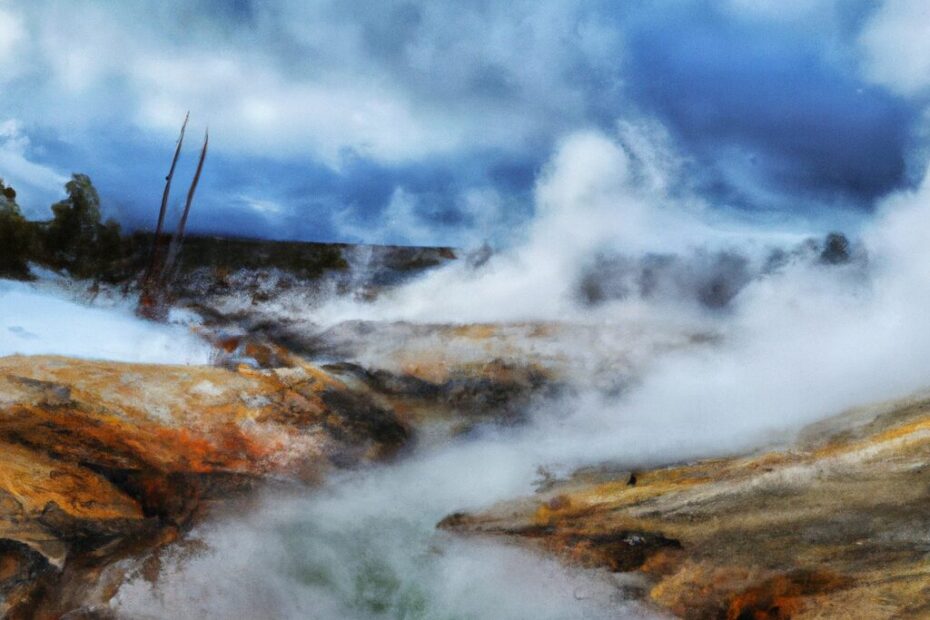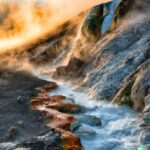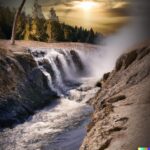Yellowstone National Park is a wonderland of geothermal wonders, with its geysers being some of the most fascinating natural spectacles to behold. But when is the best time to visit Yellowstone to witness these incredible displays of nature’s power?
From the peak season for Yellowstone National Park to the factors that affect geyser activity, this article will explore everything you need to know about the best times of year for geyser viewing in Yellowstone. Whether you’re interested in the iconic Old Faithful Geyser or the impressive Steamboat Geyser, we’ll cover the most popular geysers to see and what makes them stand out. So grab your camera and get ready to witness the magic of Yellowstone’s geysers!
When Is the Best Time to Visit Yellowstone National Park?
Determining the best time to visit Yellowstone National Park is crucial for a memorable and enjoyable experience in this iconic destination.
- During the peak summer months from June to August, Yellowstone National Park experiences the highest number of visitors, making it a bustling time to explore the park. The weather is generally warm during this period, perfect for outdoor adventures like hiking and wildlife watching. The crowds can be overwhelming, and popular attractions can get quite busy.
- If you prefer a quieter experience, consider visiting in the shoulder seasons of spring or fall when the weather is still pleasant, and you can witness the stunning fall foliage or blooming wildflowers.
What Is the Peak Season for Yellowstone National Park?
The peak season for Yellowstone National Park typically coincides with the summer months when wildlife is abundant, visitors flock to the park, and accommodations and transportation options are in high demand.
During this bustling period, it’s common to see herds of bison grazing near the geysers, and travelers eagerly hoping to catch a glimpse of elusive wolves or bears in their natural habitat. With the surge in visitors, finding suitable lodging can be a challenge, so booking well in advance is essential.
Navigating the park can be a bit overwhelming due to the crowds, but planning ahead and utilizing shuttle services can help mitigate the congestion. Securing camping reservations ahead of time is highly recommended to ensure a spot during this popular time.
What Is the Off-Season for Yellowstone National Park?
The off-season or shoulder season in Yellowstone National Park occurs during the fall and spring months when road closures are common, providing a quieter and more serene experience for travelers seeking solitude and unique perspectives of the park.
During this time, with reduced crowds, visitors have the opportunity to engage more intimately with nature and wildlife. The changing weather adds a dynamic element to your experience, with crisp mornings and vibrant fall colors or blossoming wildflowers in the spring. Hiking trails may be less crowded, allowing for a peaceful exploration of the park’s wonders. Plus, accommodations and activities often come at lower prices, making it an ideal time for budget-conscious travelers to visit Yellowstone. To make the most of your off-peak visit, be sure to check road conditions, dress in layers for potential weather changes, and plan ahead for any necessary reservations as some facilities may have limited availability.
What Are the Best Times of Year for Geyser Viewing in Yellowstone?
Understanding the best times of year for geyser viewing in Yellowstone allows visitors to witness the mesmerizing geothermal spectacles at their peak beauty and activity.
Seasonal influences play a crucial role in the timing and frequency of geyser eruptions. During the winter months, the colder temperatures can cause some geysers to have more frequent eruptions due to the contrast with the surrounding environment. In contrast, summer heat can impact the geyser activity by altering the pressure within the underground water chambers.
The combination of weather patterns and geothermal conditions creates a dynamic environment for these natural wonders to display their full power. The best times to experience geyser eruptions in Yellowstone are typically in the early mornings when temperatures are cooler, and the geysers are often more active, offering visitors a captivating show of nature’s forces.
What Are the Best Months for Geyser Viewing in Yellowstone?
The best months for geyser viewing in Yellowstone typically align with the warmer seasons when the weather is conducive to outdoor exploration, temperatures are milder, and geyser eruption patterns are more predictable.
During the summer months from June to August, geyser activity in Yellowstone National Park peaks, offering visitors a higher likelihood of witnessing spectacular eruptions. In contrast, the colder winter months, from December to February, can make viewing geysers more challenging due to snowfall and icy conditions. Spring months like April and May bring a mix of cooler temperatures and occasional rain, contributing to the dynamic and breathtaking displays of nature’s geothermal wonders.
What Are the Best Days of the Week for Geyser Viewing in Yellowstone?
Selecting the best days of the week for geyser viewing in Yellowstone can enhance the experience by avoiding peak visitor times, participating in ranger programs, and maximizing the chances of witnessing spectacular geyser eruptions.
By planning your visit strategically, you can take advantage of less crowded weekdays to appreciate the natural wonders of geysers in a more peaceful setting. On quieter days, you may also have better opportunities to engage with knowledgeable park rangers who offer insightful commentary and interactive programs, enriching your understanding of the geothermal features. Attending ranger-led activities can provide valuable context and enhance your overall experience, making your trip to Yellowstone both educational and memorable.
What Are the Best Times of Day for Geyser Viewing in Yellowstone?
Choosing the best times of day for geyser viewing in Yellowstone can result in witnessing breathtaking eruptions and experiencing the full grandeur of the park’s mesmerizing thermal features.
Early mornings and late afternoons are ideal for observing geysers, as the cooler temperatures tend to enhance the steam plumes, making them more prominent against the backdrop of the park’s vibrant landscapes.
Factors such as weather conditions, underground water levels, and geological activity greatly influence geyser behavior throughout the day. Understanding these variables can help visitors strategize their visit to maximize their chances of catching an eruption at its peak.
Positioning oneself strategically to capture the play of light and shadow during the eruptions can greatly enhance the visual impact of these natural phenomena.
What Are the Factors That Affect Geyser Activity in Yellowstone?
Various factors influence geyser activity in Yellowstone, including weather conditions, temperature fluctuations, moon phases, and the underlying eruption patterns that shape the mesmerizing geothermal displays in the park.
These key elements play a crucial role in the dynamic behavior of geysers, as they are intertwined with the natural rhythm of geothermal activity.
Weather variations can impact the pressure inside the geyser chambers, influencing the timing and intensity of eruptions. Temperature effects, on the other hand, regulate the heating and cooling processes that contribute to the build-up of underground steam and water.
Lunar influences have been observed to correlate with changes in geyser activity, suggesting a connection between celestial movements and the earth’s geothermal dynamics.
What Is the Impact of Weather on Geyser Activity?
Weather plays a significant role in influencing geyser activity in Yellowstone, affecting temperature gradients, geothermal processes, and the timing and intensity of geyser eruptions.
- Temperature fluctuations, such as sudden drops or spikes, can trigger variations in geyser behavior by impacting the boiling point of water underground.
- Atmospheric pressure also plays a crucial role, as changes in pressure can either enhance or inhibit geyser eruptions.
- Meteorological phenomena like heavy rainfall or snow can influence the water levels in the geothermal reservoirs, ultimately altering the intensity and frequency of geyser activity.
The intricate relationship between weather conditions and geothermal features showcases the delicate balance of nature within the park.
How Does the Time of Year Affect Geyser Activity?
The time of year exerts a significant influence on geyser activity in Yellowstone, with seasonal changes impacting eruption patterns, thermal dynamics, and the overall spectacle of the park’s geysers.
During the winter months, the cold temperatures can cause some geysers to erupt less frequently, as the water takes longer to heat up and reach the boiling point. Conversely, in the summer, increased warmth can lead to more frequent and powerful eruptions, creating a captivating display for visitors.
Environmental factors such as snowmelt and rain can affect the water levels in the geothermal features, influencing their behavior. As the seasons transition from spring to fall, geyser activity may fluctuate, reflecting the natural rhythm of Yellowstone’s geothermal wonders.
What Role Does the Moon Phase Play in Geyser Activity?
The moon phase can influence geyser activity in Yellowstone, affecting the gravitational forces that regulate underground water movements, geyser eruption timings, and the geological mechanisms behind the park’s hydrothermal features.
These gravitational forces, influenced by the moon’s position, play a crucial role in the hydrogeological processes within Yellowstone National Park. As the moon exerts its gravitational pull on Earth, it can cause subtle variations in the water table levels, ultimately impacting the behavior of geysers. Understanding the correlation between lunar phases and geyser phenomena requires a keen observation of how these celestial effects interact with the geological formations present in the park. By studying these moon-related influences, scientists can gain valuable insights into the complex dynamics of Yellowstone’s geothermal activity.
What Are the Most Popular Geysers to See in Yellowstone?
Exploring the most popular geysers in Yellowstone offers visitors a captivating journey through iconic thermal attractions, including the renowned Old Faithful and the mesmerizing Grand Prismatic Spring.
These geysers are among the most famous thermal features in the park, attracting tourists from around the world. Old Faithful, known for its predictable eruptions that occur roughly every 60 to 90 minutes, shoots water up to 185 feet into the air, creating a spectacular sight against the park’s backdrop.
On the other hand, the Grand Prismatic Spring stands out with its vibrant colors caused by thermophiles, microscopic organisms that thrive in the scalding waters, making it a visual feast for visitors and a must-see natural wonder in Yellowstone National Park.
What Are the Characteristics of Old Faithful Geyser?
Old Faithful Geyser in Yellowstone is renowned for its predictable eruptions, impressive height, and captivating spectacle that continues to mesmerize visitors with its rhythmic and reliable displays.
Its eruption intervals, averaging around 90 minutes, make it one of the most frequent geysers in the park, creating a sense of anticipation among onlookers. The visual splendor of Old Faithful, shooting boiling water up to 185 feet into the air against the backdrop of Yellowstone’s pristine wilderness, is a sight to behold. Beyond its natural wonder, Old Faithful holds historical significance, symbolizing the power and beauty of geothermal features in Yellowstone National Park. Visitors often describe the experience of witnessing an eruption as both thrilling and humbling, connecting them to the raw forces of nature.”
What Are the Features of Steamboat Geyser?
Steamboat Geyser stands out in Yellowstone for its towering eruptions, hydrothermal power, and geological significance as the world’s tallest active geyser, captivating visitors with its awe-inspiring displays.
The eruption dynamics of Steamboat Geyser are truly remarkable, with its sporadic but incredibly powerful bursts that can reach heights of over 300 feet, dwarfing other geysers in the park.
This geyser’s geological context is equally fascinating, as it is situated within the Norris Geyser Basin, known for its diverse array of hydrothermal features.
The exceptional hydrothermal activity of Steamboat Geyser not only amazes spectators but also serves as a testament to the incredible forces at work beneath the Earth’s surface, offering a glimpse into the raw power and beauty of geologic wonders.
Visitors to Yellowstone can witness firsthand the environmental impact of such powerful geothermal activity, highlighting the delicate balance between nature’s forces and conservation efforts in preserving these extraordinary natural treasures.
How Does Grand Geyser Compare to Other Geysers in Yellowstone?
Grand Geyser distinguishes itself in Yellowstone with its majestic beauty, expansive eruptions, and grandeur that rivals the most captivating geothermal attractions, offering visitors a mesmerizing experience amidst the park’s thermal wonders.
Its frequent and predictable eruptions, often reaching heights of up to 200 feet, set it apart from other geysers in the park. While Old Faithful may be more renowned, Grand Geyser’s unique multi-stage eruptions, with bursts of water and steam accompanied by roaring sounds, create a spectacle that is truly awe-inspiring. The surrounding landscape, with colorful mineral deposits and surrounding pools, adds to the allure, making it a must-see for anyone exploring the wonders of Yellowstone National Park.
Last Updated on February 7, 2024 by Jon Waraas – Originally Posted: February 7, 2024

I’m Jon Waraas, and I’ve been navigating the online world since 2006. By day, I’m the proud owner of some eCommerce gems, and by night, I’m the voice behind the adventures on Waraas.Com.
My heart, however, belongs to the wild beauty of Yellowstone National Park. I’ve got a collection of websites dedicated to sharing the wonders of this natural masterpiece. Oh, and did I mention? I’m currently building my own cabin inside the ghost town of Gilmore, Idaho – a cabin with tales to tell!
When I’m not immersed in the digital realm, you’ll find me lacing up my boots for a good hike or setting up camp under the star-studded sky.




